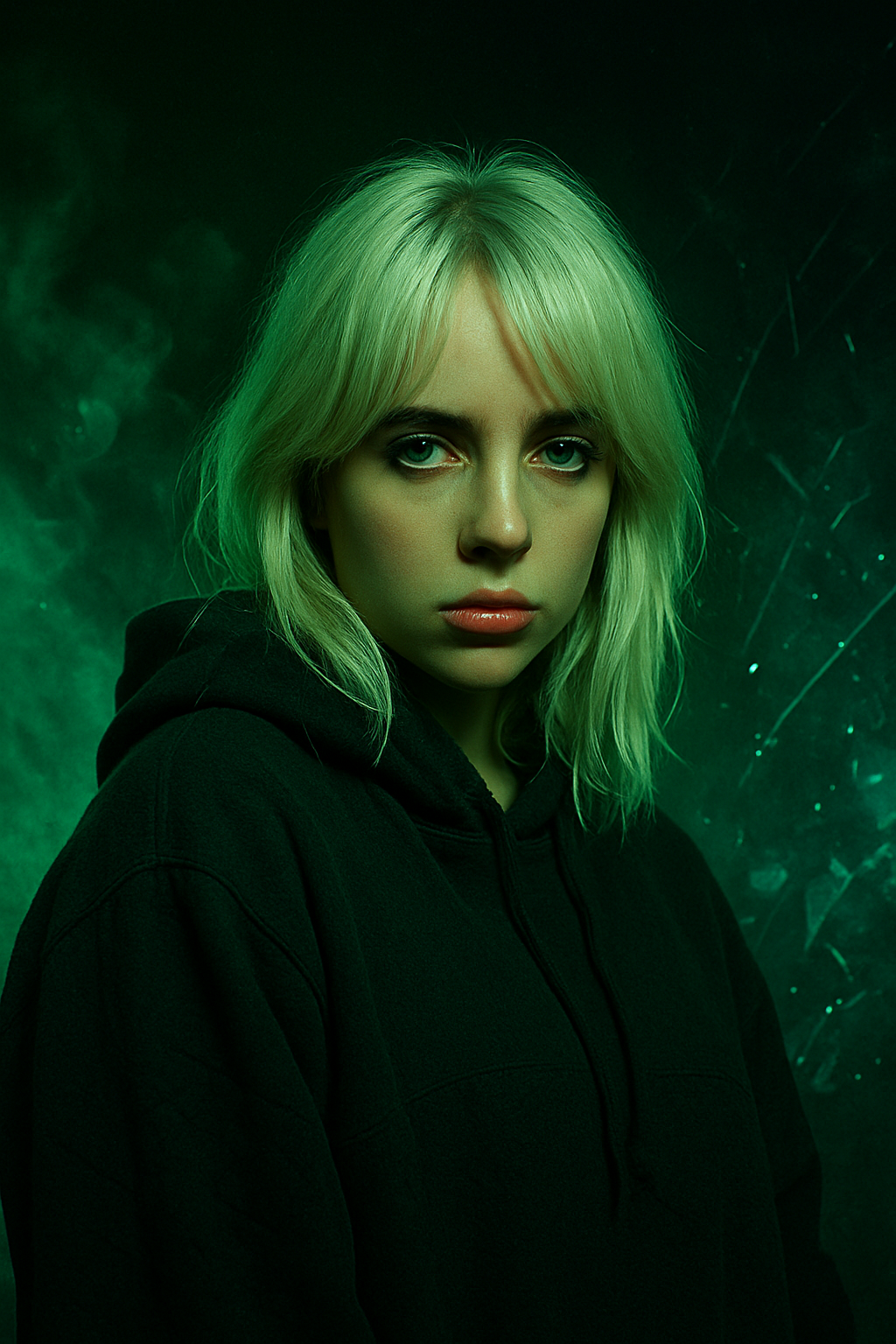
Billie Eillish is not your typical pop star. From the moment she burst onto the global music scene, she made it clear that she wasn’t interested in following the traditional path laid out before her. At just a teenager, she redefined what it meant to be an artist in the spotlight, blending vulnerability, rebellion, and creativity into a persona that captivated millions. This is the story of how a homeschooled teen from Los Angeles became one of the most talked-about, unconventional, and unforgettable stars of her generation.What immediately set Billie apart was her refusal to conform. While the music industry often thrives on glossy perfection, Billie showed up in oversized clothing, minimal makeup, and a style that refused to sexualize her image. To her, comfort and authenticity mattered more than fitting into any standard of beauty. It wasn’t a gimmick—it was a statement. This boldness struck a chord with fans who were tired of unrealistic expectations and craved someone who reflected their own struggles and insecurities.Her sound was another rebellion. With her brother Finneas producing, Billie crafted songs that felt haunting, intimate, and deeply personal. Hits like “Ocean Eyes” and later “Bad Guy” introduced a new kind of pop—one where whispers could be louder than shouts and darkness could be more captivating than glitter. Her voice carried both fragility and strength, a mix that felt strikingly real in an era of overproduction. It was proof that honesty, even when messy, could be revolutionary.Billie’s rise wasn’t just about the music, though. It was about the way she made people feel. She spoke openly about mental health, depression, and the pressures of fame, breaking down barriers that often keep young stars silent. For many fans, she became a safe space—someone who admitted she wasn’t perfect and that it was okay to not be okay. That vulnerability didn’t make her weaker; it made her relatable, human, and ultimately stronger in the eyes of those who needed her voice.Her artistry also expanded into visuals and performance. Billie’s music videos, often eerie and cinematic, blurred the line between art and pop. Her stage presence, unpredictable yet captivating, created a new kind of energy that didn’t rely on elaborate choreography or polished perfection. Instead, it thrived on mood, emotion, and an atmosphere that drew fans into her world. Each performance felt like stepping into her mind, both beautiful and unsettling.But behind the image of the “darkest star,” Billie also showed a playful, grounded side. She often reminded people that while her music could be heavy, she herself was full of humor and curiosity. That duality—the ability to be both serious and lighthearted—helped her connect across generations. She wasn’t untouchable; she was accessible in a way that made her seem like a friend rather than a distant celebrity.Her accolades came quickly, from sweeping the Grammy Awards to headlining festivals around the world. Yet, even with fame at her feet, Billie has stayed true to the ethos that brought her here: authenticity above everything. She has proven that success doesn’t have to come at the cost of individuality, and that even in an industry built on trends, there’s power in staying different.Billie Eilish’s journey is still unfolding, but one thing is certain—she has already secured her place as a defining voice of her time. She represents a generation that values honesty, creativity, and rebellion against the ordinary. By staying unapologetically herself, she has turned her darkest truths into a light that guides millions. Billie didn’t just become a star; she became a symbol of what happens when you embrace who you really are, no matter how unconventional it may seem.



